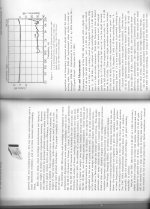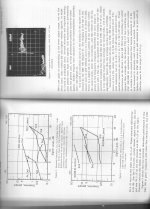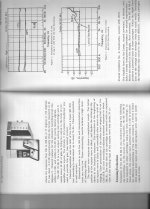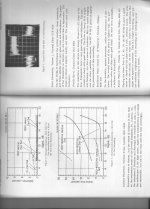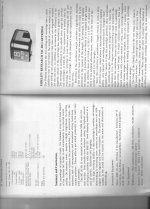Then there are those of us who do live events.
First off there really are no 24 bit accurate audio A/D converters.
Now even if we could get a 147 dB range converter it would be difficult to get the analog circuitry to match.
MSBTech claim to have one with over 148dB DR that AFAIK doesn't use gain ranging.
Stage Tech also has one that does similar numbers but they do use gain ranging.
The other issue is that most modern microphone preamps run on 15 volt rails or about 10 VRMS maximum. From the noise floor of a 150 ohm source that limits one to about 150 dB of dynamic range. But of course reality sets in and you don't see that.
The 150 ohm source noise is at 60dB of gain. Lower the gain and noise increases. I think you will find no mic pre's that have 150dB of DR.
T
This is an interesting listen.
Originally Posted by john curl
Only their MM Cartridges, you know, the cheap ones!
It's the $$$ that matter now?
Nuts again, you mean my $100 RED is crappy? But it got such
good reviews too, what's a guy to do? My kid will be happy though.
I couldn't figure out why my your tube link was faded as I've listened to that before Richard.
Here's one back at ya:
LINK
cheers
,
Okay, two back at ya:
LINK No. 2
Originally Posted by john curl

Only their MM Cartridges, you know, the cheap ones!
It's the $$$ that matter now?
Nuts again, you mean my $100 RED is crappy? But it got such
good reviews too, what's a guy to do? My kid will be happy though.
I couldn't figure out why my your tube link was faded as I've listened to that before Richard.
Here's one back at ya:
LINK
cheers
,
Okay, two back at ya:
LINK No. 2
Last edited:
I will pray
Thank you Sync. You are a good man 🙂
....so that you can find some wood to make good looking open back speakers.
Wait ! 😀 This is just stage 1 of the process. There will be stage 2, stage 3, still cardboard. If all well, wood will come in after some months (but no one promises they will look good then)
12 inch as a broadbander was something I was reading enthusiastic comments at the Full Range threads but I was sceptical about. In praxis it gives very dynamic, “big” sound (with the help of DSP eq and a few 12inch bass helpers. Upper registers is a more delicate issue but I think manageable, albeit of secondary priority to me thanks to crappy ears)
George
As I understand it this is standard in the spec for typical MM cartridges and is influenced/dictated by load capacitance.When I refer to resonance, I refer to approximate 20KHz that is often used to 'perk up' low speed analog recorders or MM phono cartridges.
Please elaborate....IOW is this effectively a form of dithering ?.I don't include 40-80K resonances built into MC phono cartridges that are necessary for the operation of the devices and secondarily, fill in for scanning losses.
Dan.
Last edited:
Dither is not meaningful in a purely analog system as here, it is just noise - but maybe you like noise?
//
PS. There is no full stop efter a question mark. Also, there should not be a space before a question mark. DS.
//
PS. There is no full stop efter a question mark. Also, there should not be a space before a question mark. DS.
George, try SOT Zobel compensation directly at the driver terminals out to 40+kHz..... Upper registers is a more delicate issue but I think manageable, albeit of secondary priority to me thanks to crappy ears)
George
If you are really keen/cashed up also null the driver resonance hump.
For correctness/finesse utilise 'ideal' passives, ie polystyrenes and non inductive/L cancelling array resistances.
Dan.
Last edited:
Good question. Not so innocent as it seems.Dither is not meaningful in a purely analog system as here, it is just noise - but maybe you like noise?
Staying in an anechoic chamber can be quite painful.
I know some sound engineers that were a little destabilized at the beginning of digital by the absence of the tape's hiss. For them, it was both like a "ground" reference that helped them to build their soundscape and some kind of "cement", giving consistency to the sound stage.
Tape recorders depend on it.Dither is not meaningful in a purely analog system as here, it is just noise - but maybe you like noise?
According to one Googling, you are correct, thank you. 😱 .PS. There is no full stop efter a question mark. Also, there should not be a space before a question mark. DS.
Dan.
As requested here is the information on the ortofon 20kHz resonance. Now note that there are many resonance mechanisms in a cartridge and I do see some people thinking just about electrical resonance and the cantilever modes. In reality there are many more that can be used if required.
The first mention I can find of this from ortofon is in the 1988 Stereophile review of the MC3000https://www.stereophile.com/phonocartridges/188ortofon/index.html where it is stated
The cause of that rise is in the design of the body. Nude Denon 103? shows where a fix for this has been found. I've also attached a picture of same generator without the fix so you can see how the mounting allows for the resonance.
Personally I would prefer to start flat so I could add a shelving EQ if required, but Ortofon MCs review and appear to sell well so they must be doing something right!
The first mention I can find of this from ortofon is in the 1988 Stereophile review of the MC3000https://www.stereophile.com/phonocartridges/188ortofon/index.html where it is stated
. If you look at reviews of Ortofon cartridges since then you can see that rise.And there have been other changes in the MC-3000. As a result of tests conducted with a panel of "golden ears," Ortofon learned that most listeners prefer a cartridge with a high end rising to 2dB at 20kHz. Accordingly, a rise of that magnitude was designed into the new cartridge.
The cause of that rise is in the design of the body. Nude Denon 103? shows where a fix for this has been found. I've also attached a picture of same generator without the fix so you can see how the mounting allows for the resonance.
Personally I would prefer to start flat so I could add a shelving EQ if required, but Ortofon MCs review and appear to sell well so they must be doing something right!
Attachments
I suspect that what you are showing is LESS damping of the mechanical resonance of the Ortofon MC cartridge, rather than the resonant frequency which is probably about 40KHz.
I suspect you are misunderstanding the different resonances as I pointed out. There are several, which one are you talking about?
I’m confused, my short disclaimer messages are approved, only to vanish 24 hours later, found a friendship request from Mr. Marsh in my inbox, now yet another stupid riddle from Mr. Simon. Certainly somebody's having a lot of fun, and it’s not me.
Once again, I’m no longer playing, live with it. I guess I should also stop reading this BS, once and for good. The entertainment value is long gone.
Once again, I’m no longer playing, live with it. I guess I should also stop reading this BS, once and for good. The entertainment value is long gone.
Bill, here is a partial review of an Ortofon MC cartridge that is similar to what you described (rising at 20K+). Real measurements and everything. Please note of the measured response of 40KHz or more. Ortofons have been making MC cartridges that do this for more than 50 years. What is different from this Ortofon MC from most others is that the mechanical damping was reduced so the output rose at higher frequencies. A full sweep measurement would show this better, but we have to use what is available.
Attachments
Last edited:
As requested here is the information on the ortofon 20kHz resonance. Now note that there are many resonance mechanisms in a cartridge and I do see some people thinking just about electrical resonance and the cantilever modes. In reality there are many more that can be used if required.
The first mention I can find of this from ortofon is in the 1988 Stereophile review of the MC3000https://www.stereophile.com/phonocartridges/188ortofon/index.html where it is stated
. If you look at reviews of Ortofon cartridges since then you can see that rise.
The cause of that rise is in the design of the body. Nude Denon 103? shows where a fix for this has been found. I've also attached a picture of same generator without the fix so you can see how the mounting allows for the resonance.
Personally I would prefer to start flat so I could add a shelving EQ if required, but Ortofon MCs review and appear to sell well so they must be doing something right!
I agree. Flat is much preferred. Which (for the millionth time) is why the Dynavector 17D-III is one of the finest transducers available. It is very flat indeed. That said, I see no reference to a peak anywhere in the audible region in the Ortofon. No frequency response graph is shown.
found a friendship request from Mr. Marsh in my inbox, now yet another stupid riddle from Mr. Simon.
Doubly lucky guy.
The entertainment value is long gone.
But you have made a lasting impression!
slightly OT:
I am searching for a data sheet for a tube (yeah I know, dark side ;-): the 6792. It is a high-voltage shunt reg, also possibly known as the CV6792 or CK6792. I know it exists, seen references to it, but several hours with Google didn't turn up any data. Anybody have it per chance?
Jan
I am searching for a data sheet for a tube (yeah I know, dark side ;-): the 6792. It is a high-voltage shunt reg, also possibly known as the CV6792 or CK6792. I know it exists, seen references to it, but several hours with Google didn't turn up any data. Anybody have it per chance?
Jan
You already have this I guess ?
http://www.ase-museoedelpro.org/Museo_Edelpro/Catalogo/tubes/records_nw/6792/6792.pdf
Patrick
http://www.ase-museoedelpro.org/Museo_Edelpro/Catalogo/tubes/records_nw/6792/6792.pdf
Patrick
- Status
- Not open for further replies.
- Home
- Member Areas
- The Lounge
- John Curl's Blowtorch preamplifier part II

